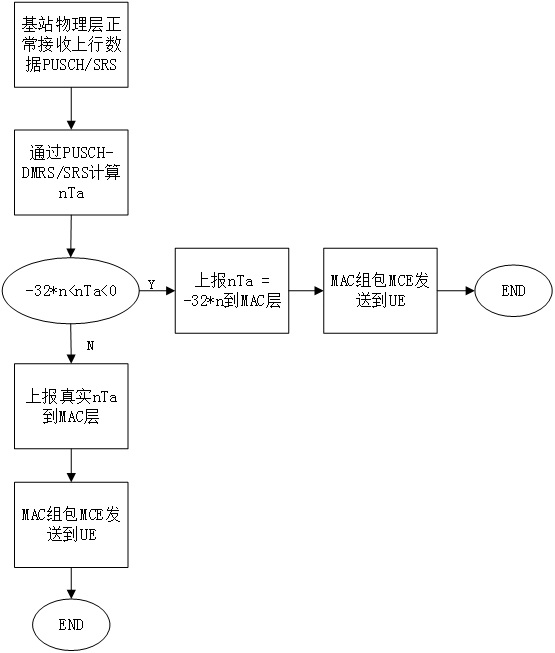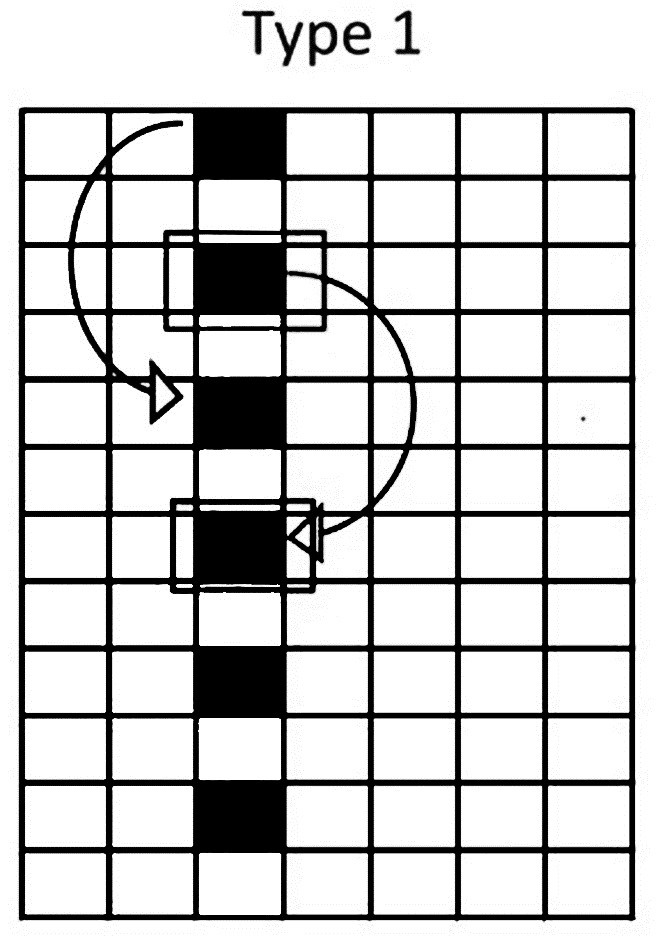Optimization method of ue mobile timing advance based on 5gnr
A technology of timing advance and optimization method, applied in the field of UE mobile timing advance optimization based on 5GNR, can solve the problems of unconsidered and inter-symbol interference interference, and achieve the effect of reducing ISI interference
- Summary
- Abstract
- Description
- Claims
- Application Information
AI Technical Summary
Problems solved by technology
Method used
Image
Examples
Embodiment 1
[0052] In this example, if figure 1 As shown, a method for optimizing UE mobile timing advance based on 5G NR includes the following steps:
[0053] Step 1: The physical layer of the base station normally receives the uplink data PUSCH DMRS or SRS signal;
[0054] Step 2: According to the PUSCH DMRS or SRS signal received by the physical layer of the base station, use the physical layer algorithm to calculate the nTa time delay value;
[0055] Step 3: judge the nTa delay value according to the preset reporting conditions, and if the reporting conditions are met, the physical layer of the base station will report TA0 to L2;
[0056] Step 4: L2 calculates the TA value of the delay required by the UE according to the reported TA0, and sends the TA value to the UE through the PDSCH, and the UE adjusts the advance amount of the uplink signal according to the TA value.
[0057] Specifically, step 2 specifically includes: according to the PUSCH DMRS or SRS signal received by the ph...
Embodiment 2
[0070] In this embodiment, on the basis of the method steps provided in Embodiment 1, the UE mobile timing advance optimization process includes:
[0071] (1) Calculate the nTa delay value (the unit is Tc, which is also equivalent to the sampling interval value) through the PUSCH DMRS or SRS signal, which reflects the relative delay of the UE signal received by the current cell.
[0072] (2) If the calculated delay value nTa is negative and nTa>-32*n, then report it directly to L2 as TA0=-32*n, where n is an integer. Example: If nTa = -60, then take n as 2, and report to L2 as nTa=-64
[0073] (3) After receiving TA0 reported by the physical layer, L2 calculates that the UE needs to delay by 2 TAs, then fill in 30 for the MCE6bit value of TA, and send it to the UE through the PDSCH, so that the UE can advance the uplink signal Adjustment.
[0074] The adjustment process of the advance amount specifically includes: the UE sends the data in advance or later according to the TA...
Embodiment 3
[0076] In this embodiment, another situation in which the method in Embodiment 1 is specifically used for judging the delay value is disclosed, and the specific implementation steps for adjusting the advance amount are as follows:
[0077] 1. After the UE accesses the cell, the physical layer of the base station normally processes PUSCH data / SRS data. Through the characteristics of PUSCH-DMRS / SRS, the physical layer algorithm is used to estimate the arrival time difference nTa from the UE to the base station, where the unit of nTa represents a sample point interval;
[0078] 2. The physical layer further calculates the nTa value reported to the MAC according to the UE time delay calculated by the DMRS. At this time, the calculated current time delay value nTa is negative and less than -32*n, and then reports the nTa value to the MAC. is the real delay value;
[0079] 3. The MAC layer receives the nTa reported by the physical layer, performs MAC CE grouping, and sends it to th...
PUM
 Login to View More
Login to View More Abstract
Description
Claims
Application Information
 Login to View More
Login to View More - R&D
- Intellectual Property
- Life Sciences
- Materials
- Tech Scout
- Unparalleled Data Quality
- Higher Quality Content
- 60% Fewer Hallucinations
Browse by: Latest US Patents, China's latest patents, Technical Efficacy Thesaurus, Application Domain, Technology Topic, Popular Technical Reports.
© 2025 PatSnap. All rights reserved.Legal|Privacy policy|Modern Slavery Act Transparency Statement|Sitemap|About US| Contact US: help@patsnap.com



